Alghero
We flew to Alghero from NYC in August 2003 and left behind the biggest and fattest Jewish wedding celebrations, which warranted the biggest and strictest 100 years of dieting.
We also left behind the biggest blackout in NYC, one of the biggest in history.
We flew red eye to Heathrow, then to Rome. From Rome, the small flying device looking more like a dragon-fly, than a serious flying device carried us to Alghero, in Sardinia. I remember coming in and out of the deepest sleep during the flight. I remember the schoolchildren screaming English words in my ear (I guess to impress us), I remember one of them tapping me on the shoulder and saying very softly : “Guarda, this is very, very, very fantastico!!!” And “fantastico” it was. The bluest skies and the bluest water and the most picturesque coast were approaching us with the speed of light(dragonfly). I have never seen anything more beautiful.
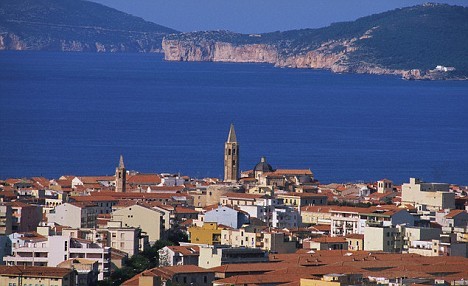
We picked up our hired Polo. Out of habit my husband started to drive on the left side of the road. The driver on the opposite side of the road was from UK (the chance of one in million), he was also driving on the left side of the road. We were pretty lucky. After giving each other the wild stare of the instant survivors, we switched the sides and went to the meeting point to pick up the keys from the landlord who, in accordance to our Sardinia “matchmaker”, spoke perfect English. No English, of course, but after my “perfect” Italian we finally understood the directions of how to go to our villa. Villa it was not, it was a very rudimentary house with one bedroom and a tepid shower. We had 5-6-10 hours of uninterrupted sleep. The only thing we knew, when we woke up, that we were in the deep of the night with no hope to eat anywhere. We drove our Polo to the city centre and were pleasantly surprised that at 1am all restaurants were open and bustling with life…
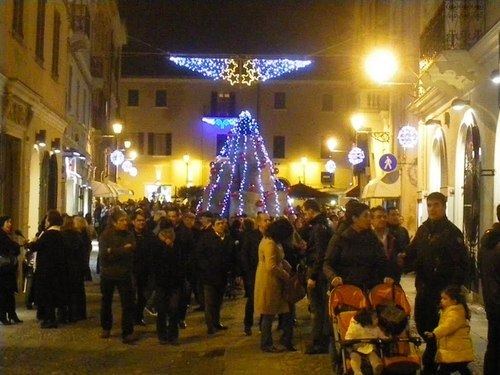
When we woke up the next day and saw the garden with all possible fruit and vegetables and whatever God created in 6 days (read the Bible), after our landlord/ (ressa) brought us clean towels and pots and pans, I decided the Garden of Eden was here, forget the tepid shower.
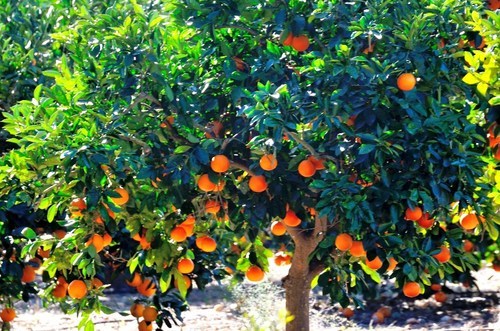
We spent our first full day in Alghero.
Three rules in Sardinia concerning food:
1) The breakfast (murzu in local dialect) – Expect almond cakes, pastries stuffed with panna, local honey, artisanal yogurts, pecorino made from Sardinian sheep’s milk, prosciutto e salsiccia, and of course proper, grown-up coffee to wash everything down
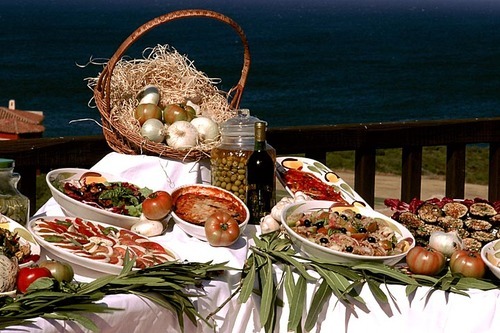
2) The lunch (pràngiu) finishes early and you feel that at 1pm you don’t want to eat anyway after such big breakfast. Don’t be fooled by the current state of your stomach…
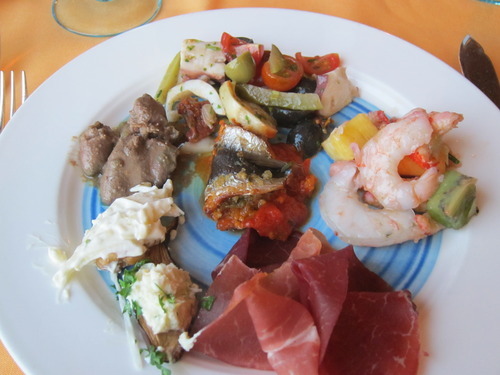
3) The restaurants open for dinner (xena) at 8pm. By this time you are ready to eat a whole pig, a whole fish or both of them stomach permitting.

There is a reason we stopped in Alghero and not in Porto Cervo even though Porto Cervo is more famous by its luxury, aristocrats, and Berlusconi/Putin duet happening annually.
Therefore a little bit of history:
Alghero pronunciation: [alˈɡɛro]; Catalan L’Alguer, pronounced: [ɫəɫˈɣe], locally: [lalˈɣe]; Sardinian: S’Alighèra; Sassarese: La Liéra), is a town of about 44,000 inhabitants in Italy. It lies in the province of Sassari in North Western Sardinia.
The name Alghero comes from the medieval Latin Aleguerium, meaning stagnation of algae. The Catalan Language is co-official in the city, unique in Italy.
The area of today’s Alghero has been settled since pre-historic times. The so-called Oziere culture was present here in the 4th millennium BC; while the Nuragic civilization was present in the area around 1500 BC.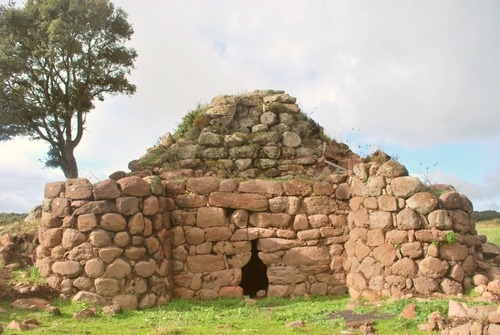
Due to its strategic position in the Mediterranian Sea, Alghero was built around a fortified port, founded around 1102 by the Genoese Doria family.
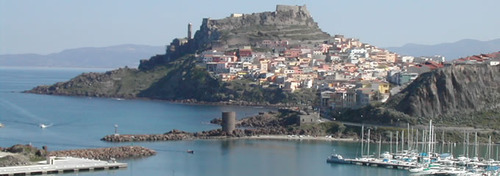
The Doria ruled it for centuries, apart from a brief period under the rule of Pisa (1283–84). In 1353 it was captured by the forces of the The Crown of Aragon under Bernardo di Carbera in 1372, following several revolts, the indigenous Sardinian and Genoese population was expelled, and Alghero later grew in numbers because of the arrival of Catalan colonists. In the early 16th century Alghero received the status of King’s City (ciutat de l’Alguer) and developed economically.

The Aragonese rule was followed by invasion of the Spanish Habsburgs. Their dominion, ending in 1702, brought some stylish elegance to the city. In 1720 Alghero and Sardinia were handed over to the Piedmont based House of Savoy. Around 1750 a wide channel was excavated to improve the defensive position of the peninsula. In 1821 famine led to a revolt of the population, which was cruelly suppressed. At the end of the same century Alghero was de-militarised.
Since then, Alghero has become a popular tourist resort. It is interesting that Sardinia was the last country and Alghero was the last town in the world to submit to feudal law, several years before it was abolished all over the world.
In Alghero, a dialect of Catalan is spoken, introduced when Catalan settlers repopulated the town after the Crown of Aragon conquered the city from the Genoese in 1353 and subsequently expelled the indigenous population,

We travelled a lot around Alghero – swam in the cleanest beaches in Mediterranean sea – my best recommendation is Santa Caterina di Pittinuri beach near the little town of (you guess) of Santa Caterina di Pittinuri.
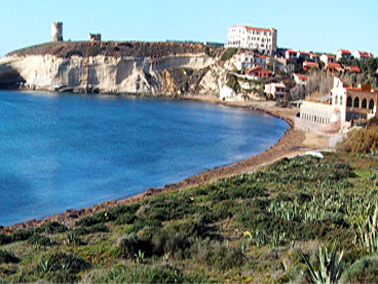
Forgive me Australia, we have the best beaches, but they are too cold for my frozen European body. Santa Caterina beach is the warmest, the cleanest the “I want to stay here forever” beach. We had the best gelato in the town, for which we had to climb up 300 stairs (hate climbing) to reach the fortress gates. Mind you, most of the towns in Sardinia are built like fortresses due to many attacks from numerous neighbours.
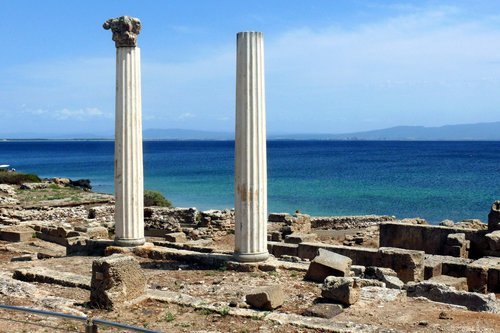
We also drove to Tharros – a hometown to Phoenician settlement.
From the 8th century BC, Phoenicians founded several cities and strongholds on south west of Sardinia; Tharros, Bithia, Sulcis, Nora and Karalis Cagliary. The Phoenicians came originally from what is now Lebanon and founded a vast trading network in the Mediterranean. They settled along the South Western coasts. Sardinia had a special position because it was central in the Western Mediterranean between Carnage, Spain, the river Rhone and the Etruscan Civilization. The mining area around Iglesias was important for the metals lead and zinc. The cities were founded on strategic points, often peninsulas or islands near estuaries, easy to defend and natural harbours. The cities were administered by Plenipotentiaries, called Sufetes.
After trying to absorb all this information, we asked our guide where we could have some dinner (6pm)?, he looked at us as we were indeed early Phoenicians. He said, that everything in Tharros opened after 8pm after siesta.
We decided to drive to Oristano , did not see much because of the ever growing hunger and decided to go back to Alghero. When we stopped at one of the petrol stations (AutoGrill) we were pleasantly surprised by the quality of coffee and the food. By the way, any petrol station in any point of Italy has excellent coffee.
Also, as a matter of interest, Sardenia does not have autostradas (toll roads), only motostradas (toll free roads), where the speed of driving is very undefined. Driving on the right side of the road was our prerogative anyway.
Next day was dedicated to Porto Cervo. We were dying to know what was there, which was not anywhere else in Sardinia, what makes Putin kiss Berlusconi with the ardency of a young lover and stay there for weeks…
We drove there for 4 hours and discovered that it was – Nah, nyet, really nothing.
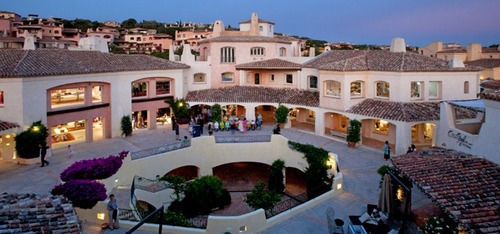
Porto Cervo seemed like a small portion of KitchenAid mix of Beverly Hills and Monaco, even cafes were scarce and shops, well, in Double Bay they are definitely better. There are no sidewalks there, hello Palm Beach!) The villas, real villas were behind high walls and to really appreciate the city we simply had no chance.
A little bit of history):
Porto Cervo (Italian pronunciation: [ˌpɔrto ˈtʃɛrvo]) (Deer’s Port in English) is an Italian seaside resort in northern Sardinia.
It is a fraction of the area of Arzachena. Porto Cervo village is the main centre of the Costa Smeralda. It was built by Prince Karim Agha Khan, together with the other investors. Porto Cervo has a resident population of 421 inhabitants. In a study released by the European luxury real estate brokerage Engel & Völkers, Romazzino Bay in Porto Cervo is the most expensive location in Europe. House prices reach up to 300,000 euros per square meter. In 2011 Costa Smeralda had the second, the 4th and the 6th most expensive hotels in the world, the Pitrizza, the Romazzino and the Cala di Volpe Hotel. In 2012 the Hotel Cala di Volpe, which is featured in the 1977 James Bond film The Spy who loved me is listed at number 7 on World’s 15 most expensive hotel suites complied by CNN Go in 2012. The presidential suite of the hotel billed at US$32,736 per night. And we are saying Intercontinental in Double Bay is expensive)!
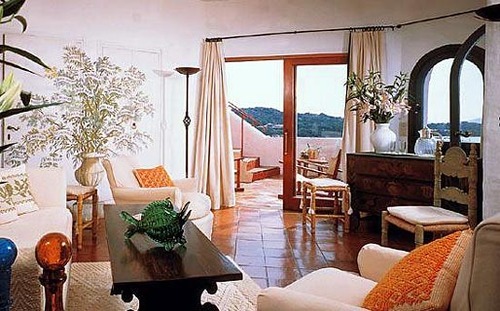
After such uneventful day (we did not even meet Berlusconi) we returned home to pack – next day we were flying to London, only to discover that we had people in the “villa”. There was a family of our landlords, cooking for us a farewell dinner.
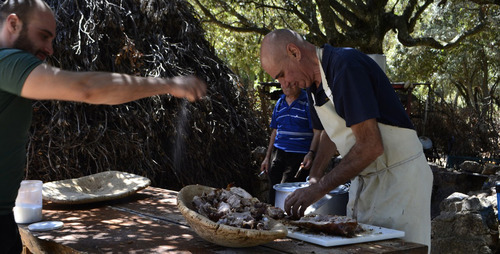
They were very disappointed that we could not eat their local delicacy roasting suckling pig, so they made the most delicious pasta con vongole instead. There were lots of cheeses and fresh figs, local wines and of course, limoncello, (a must to bring from Sardinia along with the local coral jewellery).
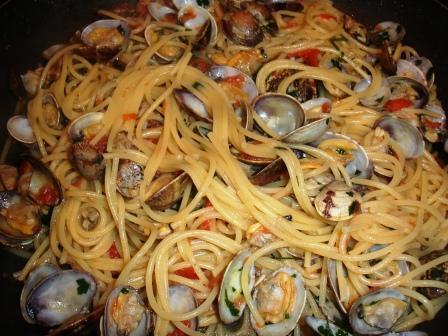
Mama, Papa and two kids spoke to us in a mix of Sardinian dialect, Italian and English. The food and the wine dissolved any language differences…Cicadas were singing in the background. The trip was ending with the saddest feeling that we needed another 3 days to fully enjoy Sardinia. Is it not the best trip, then? The one, which makes you want more and more? Very, very, very, Fantastico!
